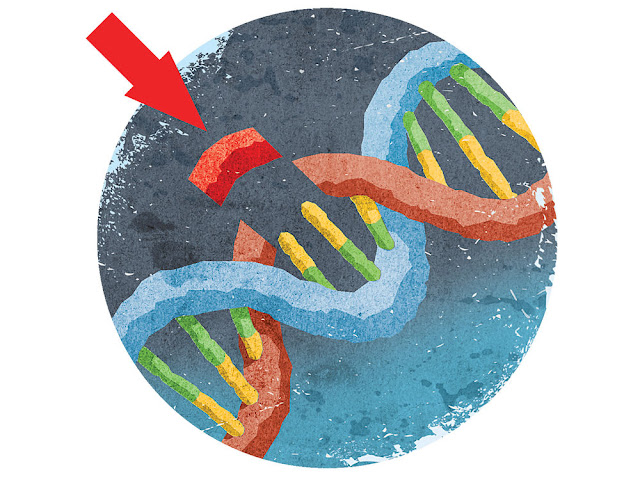 |
| Pixabay |
Using whole genome sequencing, they wound back time on cell samples from adults and revealed what took place in the genome when they were still microscopic embryos. It turns out, our first two cells contribute to our development in very different ways.
 |
| Biology Reference |
Mutations come in two forms: the hereditary ones we get from our parents, which can be found in virtually every cell of the body; and the acquired (or somatic) mutations that can occur at any stage of a person's life, including those very first days when the embryo is just starting to split into multiple cells.
Somatic mutations don't necessarily cause problems, but they can sometimes lead to cancer and other diseases. They also don't necessarily live in every cell (that's called mosaicism).
We have a fairly murky understanding of the somatic mutations that happen during the earliest life stages, because we can't just watch that stuff happening in real time.
But now researchers have discovered a way to trace these mutations back to their first appearance.
 |
| Medical Xpress |
"This is the first time that anyone has seen where mutations arise in the very early human development. It is like finding a needle in a haystack," says geneticist Young Seok Ju from the Wellcome Trust Sanger Institute in the UK and the Korea Advanced Institute of Science and Technology.
"There are just a handful of these mutations, compared with millions of inherited genetic variations, and finding them allowed us to track what happened during embryogenesis."
To find these mutations, the team analysed blood and tissue samples from 279 people with breast cancer. Using samples from cancer patients allowed them to test whether mutations were present in both normal blood and tissue, and in surgically removed tumour samples.
Since breast cancer tumours develop from a single cell, a somatic mutation would either be present in every tumour cell, or not at all, which gives a clue to its possible origins.
By tracking and comparing the spread of different mutations in these various tissue samples, the scientists verified a whopping 163 mutations that must have happened within the first few cell divisions of the persons' embryonic development.
 |
| University of South Florida |
This gave them a unique insight into how early embryonic cells interact.
And that's not all - a statistical analysis revealed that when a fertilised egg divides for the first time, those two cells actually contribute building material for the rest of the body at different proportions.
It appears that one of the first two cells that make us up gives rise to 70 percent of the body tissue, while the other one chips in for the rest.
"We determined the relative contribution of the first embryonic cells to the adult blood cell pool and found one dominant cell - that led to 70 percent of the blood cells - and one minor cell," says molecular biologist Inigo Martincorena from the Sanger Institute.
 |
| indiatoday.intoday.in |
"This opens an unprecedented window into the earliest stages of human development."
That's exciting, because having that window will let us discover even more about how humans develop and acquire various mutations from the get-go.
Even though the vast majority of mutations are random and harmless, occasionally they can affect an important gene, causing a developmental disorder or a disease.
"Essentially, the mutations are archaeological traces of embryonic development left in our adult tissues, so if we can find and interpret them, we can understand human embryology better," says lead researcher Mike Stratton, director of the Wellcome Trust Sanger Institute.
Other articles on the same theme:
Story source:
The above post is reprinted from materials provided by Sciencealert . Note: Materials may be edited for content and length.

